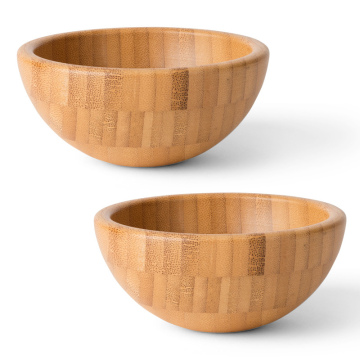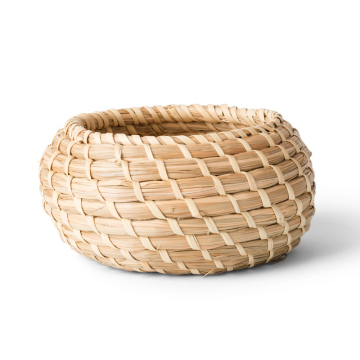Savoring Japan: A Sushi Culinary Adventure
The Rich History of Sushi in Japan
The origins of sushi can be traced to ancient Southeast Asia, where the preservation of fish through fermentation was first practiced. This early method involved wrapping fish in rice, allowing natural fermentation to occur, thereby extending the fish's shelf life. Over time, this technique migrated to Japan, where local innovations transformed sushi into the diverse and refined culinary art that it is today. The term "sushi" originally referred to the sour flavor of rice used in this preservation process, rather than the fish itself.
A significant milestone in sushi's evolution arose during the Edo period (1603-1868) in Tokyo, formerly known as Edo. During this time, the creation of nigiri sushi emerged, featuring hand-formed rice topped with sliced fish. This style of sushi catered to urban tastes and epitomized the fast-paced lifestyle of the Edo populace. As street vendors began to sell nigiri in parks and public areas, sushi transitioned from a preservation method to a convenient and social dining experience, marking a pivotal shift in its cultural significance.
The importance of sushi in Japanese society cannot be overstated. It became not only a staple food but also a reflection of social status and artistry, with chefs dedicating years to perfect their craft. Various regions of Japan contributed to the development of distinct sushi styles, such as Osaka's battera, a pressed sushi, and Hokkaido’s chirashi, characterized by scattered toppings over rice. Each regional variation showcases unique local ingredients and traditional preparation methods, further enriching the tapestry of sushi history.
Through centuries of adaptation and innovation, sushi has maintained its allure, evolving from an ancient preservation technique to a symbol of Japanese culinary culture admired worldwide. This journey reflects not only changes in food practices but also the deep-rooted connection between sushi and the history of Japan itself.
Exploring Different Types of Sushi
Sushi, a celebrated element of Japanese cuisine, encompasses a variety of styles and flavors that reflect the country's rich culinary heritage. Among the most recognized types of sushi are nigiri, maki, sashimi, and temaki, each offering a distinct experience to the palate.
Starting with nigiri, this type consists of hand-formed rice topped with a slice of fish or seafood. The combination typically includes a small dab of wasabi, enhancing the dish’s flavor. Nigiri is often crafted using fresh, seasonal ingredients, which determine the type of fish used. Notably, the art of creating nigiri lies in the precision of molding the rice and the careful selection of toppings, which may include everything from salmon to eel.
In contrast, maki sushi, or rolled sushi, combines rice and fillings, wrapped in seaweed. There are two main styles of maki: hosomaki, which is smaller and usually contains one filling, and uramaki, or inside-out rolls, where the rice is on the outside. Fillings can vary widely, from avocado and cucumber to tempura shrimp, showcasing regional ingredients that influence flavor profiles.
Sashimi, while not technically sushi, is often included in sushi discussions. This dish features expertly sliced raw fish, served without rice, emphasizing the quality of the seafood itself. The careful preparation of sashimi is crucial, as the freshness and flavor of the fish are paramount. Common varieties include tuna, salmon, and octopus, usually garnished with wasabi or soy sauce for an enhanced taste experience.
Finally, temaki, or hand rolls, present sushi in a cone-shaped wrapper of seaweed filled with rice and various ingredients. This style offers an interactive dining experience, as diners can enjoy assembling their own rolls. Temaki allows for creativity, making it a popular choice in both casual and formal settings.
Exploring these different types of sushi reveals the depth and variety of flavors found in Japanese cuisine. The regional variations and local ingredients contribute significantly to the diversity and richness of sushi, making it a culinary adventure worth savoring.
The Art of Sushi Making: Techniques and Traditions
Sushi making is a meticulous art that combines skill, precision, and a deep respect for ingredients. Central to this culinary discipline is the sushi chef, or itamae, who not only possesses technical expertise but also an intimate understanding of the delicate flavors that define sushi. The journey of creating sushi begins with the selection of high-quality ingredients. The freshness of the fish, the texture of the rice, and even the vegetables play a vital role in the final product. Renowned sushi chefs often source their fish from trusted suppliers, ensuring that each ingredient meets the highest standards.
The process of preparing sushi involves various techniques, each requiring years of training. One essential technique is the preparation of sushi rice, or shari, which is typically seasoned with rice vinegar, sugar, and salt. Achieving the perfect balance of flavors and texture is crucial, as the rice serves as the foundation for the entire sushi experience. Furthermore, the itamae utilizes traditional tools such as the yanagiba knife for slicing fish with precision, allowing for clean cuts that accentuate the quality of the fish.
The rituals surrounding sushi preparation and consumption also reflect Japan's cultural heritage. Respect for the ingredients is paramount, and the itamae often conducts a ceremonial washing of hands before beginning, symbolizing purity and dedication to the craft. When dining, patrons are encouraged to express their gratitude, either through the phrase "Itadakimasu" before the meal or by savoring each bite to honor the labor involved in its creation. This attention to detail and reverence for both the ingredients and the chef culminates in a dining experience that transcends mere nourishment, transforming sushi into an art form that embodies the spirit of Japanese culture.
Sushi Tasting Experiences: Where to Savor Sushi in Japan
Exploring the vibrant culture of Japan often leads food enthusiasts straight to the heart of sushi, a culinary art that has gained worldwide acclaim. For those eager to partake in authentic sushi tasting experiences, Japan presents a plethora of options ranging from prestigious, high-end restaurants to more casual sushi bars. Each venue offers a unique atmosphere and a distinct approach to this beloved dish.
Tokyo, being the epicenter of sushi, boasts some of the most revered establishments. Notable among them is Sukiyabashi Jiro, made famous by the documentary "Jiro Dreams of Sushi." Here, patrons can expect a meticulously crafted multi-course sushi experience that highlights the essence of fresh, seasonal ingredients. For a more relaxed atmosphere, visitors may consider Tsukiji Outer Market, where numerous small sushi stalls serve mouth-watering sushi from early morning until late afternoon, allowing for an interactive tasting adventure.
Osaka, often referred to as Japan's kitchen, offers an array of casual sushi spots such as Endo Sushi in the Osaka Central Fish Market. Known for its fresh offerings and friendly service, this family-run establishment invites sushi lovers to savor robust flavors without the pressures of a formal setting. In Kyoto, it is worth visiting Izuu, famous for its unique, marinated mackerel sushi, providing a taste of the region's traditional practices.
When choosing a sushi location, consider the style of sushi you wish to experience—whether it be omakase (chef's choice) or nigiri. A tip for newcomers is to always ask questions and communicate preferences to enhance the tasting experience. Expect a journey through varied textures and flavors that embody the artistry behind sushi making. Each bite tells a story of tradition and craftsmanship, setting the stage for a memorable culinary adventure in Japan.











